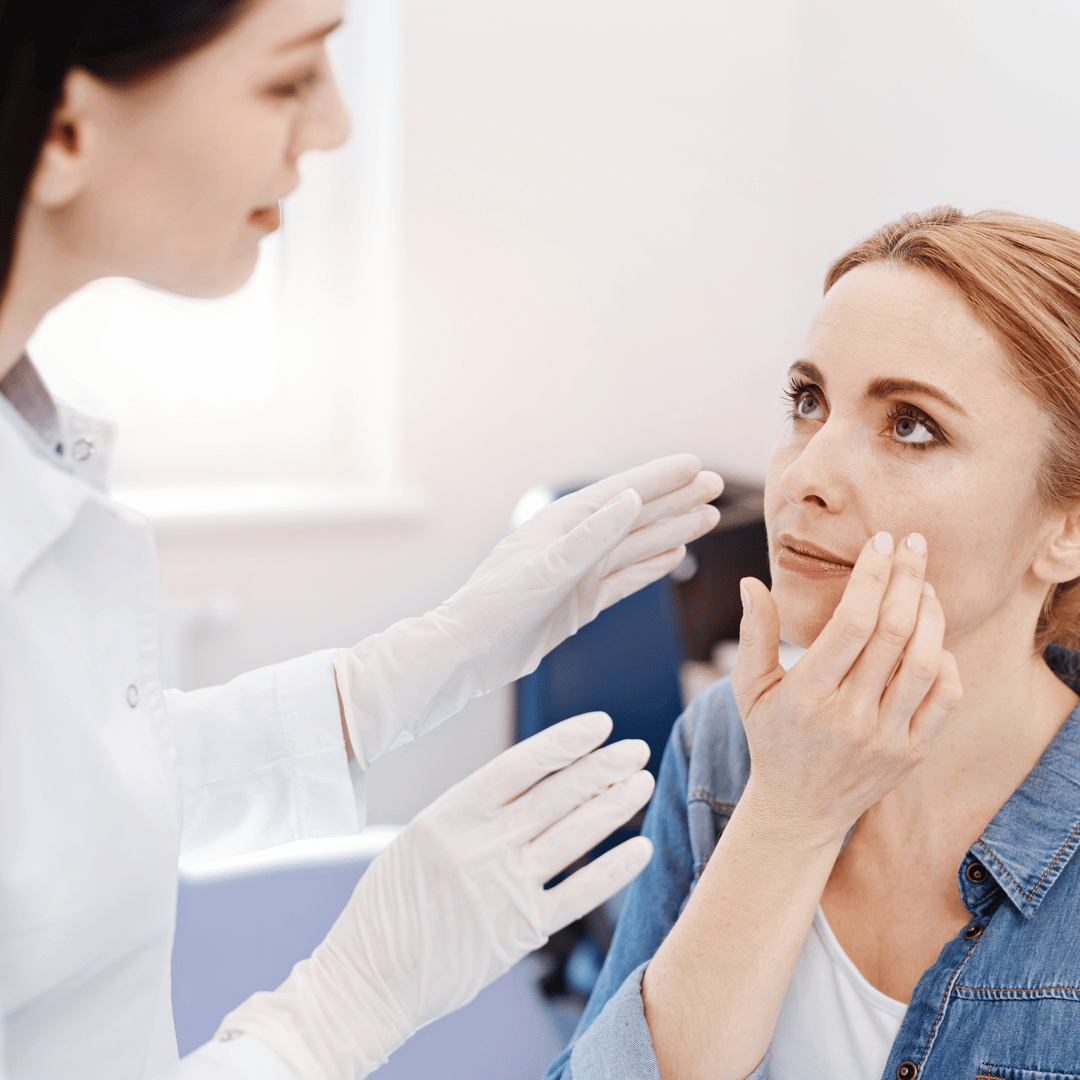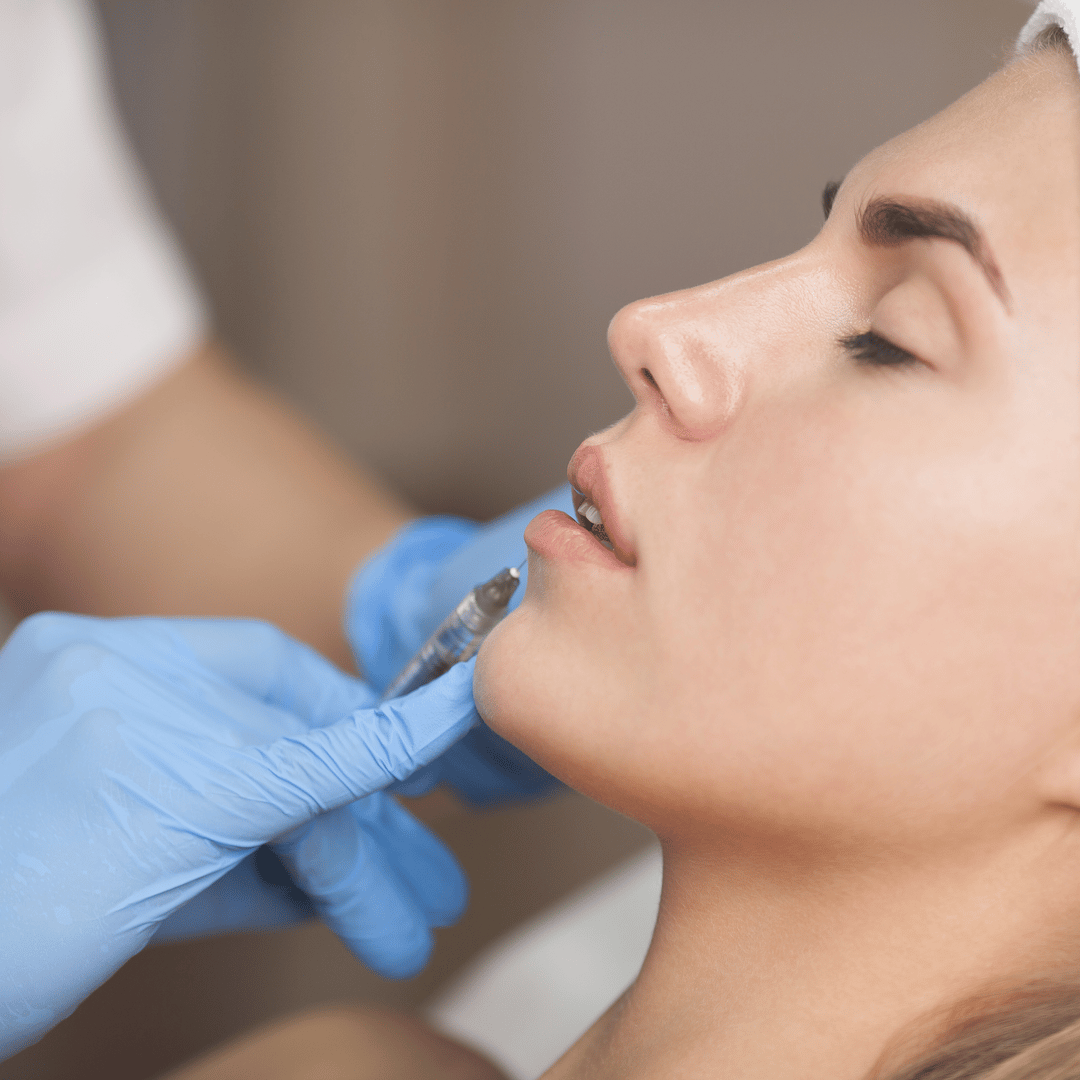Dermal fillers have become very popular in volumising and sculpting facial features. They offer a temporary, yet versatile option to offset ageing changes. Restoring your youthful features can help boost your confidence without going under the knife. We can get some amazing natural results with strategically placed dermal fillers. Lips can be enhanced and hydrated and cheeks can be lifted. Deep folds can be softened and sagging skin can be lifted. Jowls can be minimised and jaw lines sculpted. The role of the filler is either lifting and replacing volume or defining and creating a balance of facial features. Staring at our own faces during the lockdown has prompted many to seek cosmetic treatments. Unfortunately, in the UK, you don’t need any medical qualifications to perform these treatments. Anyone can purchase dermal fillers and inject themselves or others. It is up to you to choose the right injector!
What are dermal fillers?
Dermal fillers contain chains of sugar molecules held together by special bonds. The difference in their structure gives them different properties. Some are soft and malleable while others are firm. This property allows different products to be used in different areas of the face. For example, a cheek or chin filler is firmer and provides structural support. On the other hand, lip fillers are softer and more mobile. Once within the skin, they absorb and hold on to water giving a plumping effect.
Over a period of 6-18 months, the filler gets broken down and our face reverts back to its original state. The ideal dermal filler will have the stretchability to mimic our facial movements. If done correctly, dermal filler treatments are undetectable giving a refreshed rather than a ‘done’ appearance. For this reason, I only use the award-winning premium Teosyal range of fillers.
Although widely available, dermal fillers must be purchased from MHRA regulated pharmacies. Despite being expensive, this ensures that the product is genuine.
What is involved in a dermal filler treatment?

Dermal filler is an injectable product. This means that once injected it will remain in your face for months. Therefore, you should only go through with it after careful consideration. Once you are satisfied that you have all the information including risks and benefits, you can decide on your best option.
As an injectable product, it has to be delivered into the correct position via the skin. Medical practitioners use a needle, or a blunt-ended device called a cannula to deliver dermal filler. The choice depends on personal preference, the area being treated, and the desired effect. While needles are excellent for delivering precise treatment, cannulas are better suited in high-risk areas and for achieving a more widespread delivery. As with any injections, there is a small risk of redness, bruising, and swelling. These are temporary and mild.
Some areas of the face require a numbing cream for your comfort. The treatment itself does not take long. You can actually go back to work or continue with your day after most treatments. Before you leave, your practitioner will advise on how to spot worrying signs after treatment and how to contact them.
What are the risks of dermal fillers?
If identified early enough, an enzyme called Hyalase can be injected into the affected area to dissolve the filler. There are a few issues to consider here. Firstly, although fillers can be bought anywhere, Hyalase is a prescription-only medication. Secondly, you may be allergic to Hyalase hence the treatment has its own risk. Thirdly, the dissolving process can cause excessive swelling and discomfort. However, it is a necessary treatment for the rare complication described above.
As the blood supply to the face is complex, the injector must always know where the tip of the needle is. This is why the Hyaluron or ‘no-needle filler’ pen is an unsafe treatment. With this pen, the filler is just shot into the skin with pressure and it can easily enter a blood vessel and cause complications.
Very rarely, fillers can lead to swelling in response to inflammation in the body following an infection. You may need prescription medication to treat this. This is why it is better to consult a medical practitioner to perform the treatment.

How to prepare for a dermal filler teatment?
How to care for your skin after dermal fillers?
It is important to watch out for any signs of complications for up to 2 weeks after treatment hence avoid traveling abroad in this period.
What are worrying signs after your treatment?
- Excessive swelling
- Continued pain
- Skin colour changes
- Blistering of the skin
This may indicate that the filler is compromising blood supply and need immediate dissolving.
When will you see results?
When should you avoid dermal fillers?
- Never have dermal fillers if you are pregnant or breastfeeding as they’ve never been tested in this group.
- Avoid dermal fillers if you have an active infection.
- Discuss any planned dental procedures with your practitioner as facial fillers need to be postponed.
- If you suffer from cold sores, lip fillers can trigger an attack. Therefore you will need preventative treatment.
- You should avoid dermal fillers for 2 weeks prior to and for 3 weeks after the Covid-19 vaccination. This is a precautionary measure. A recent article reported three patients who had previously had fillers experienced swelling to their faces after receiving the Moderna vaccine during the trials. It is worth noting that it is possible to get mild swelling at the dermal filler site with viral or bacterial infections. This is thought to be an inflammatory reaction and very rare. Treatment involves prescription medication.
Dr Tash Kanagasabai
📱07825 999 144 or
☎️ 01277 549 006
💌 drtash@skinenhanceclinic.com
Website: Book an appointment


Recent Comments